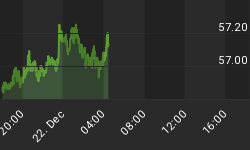9/10/2010 9:05:51 AM
The bulls continued to push equities higher, initially supported by gains in foreign markets and optimistic economic reports...
Recommendation:
Take no action.
Daily Trend Indications:

- Positions indicated as Green are Long positions and those indicated as Red are short positions.
- The State of the Market is used to determine how you should trade. A trending market can ignore support and resistance levels and maintain its direction longer than most traders think it will.
- The BIAS is used to determine how aggressive or defensive you should be with a position. If the BIAS is Bullish but the market is in a Trading state, you might enter a short trade to take advantage of a reversal off of resistance. The BIAS tells you to exit that trade on "weaker" signals than you might otherwise trade on as the market is predisposed to move in the direction of BIAS.
- At Risk is generally neutral represented by "-". When it is "Bullish" or "Bearish" it warns of a potential change in the BIAS.
- The Moving Averages are noted as they are important signposts used by the Chartists community in determining the relative health of the markets.
Current ETF positions are:
Long at DIA $102.80
Long QQQQ at $44.76
Daily Trading Action
The major index ETFs opened higher with the Dow and S&P-500 reaching and failing to overtake their 200-Day Moving Averages (DMAs). All the major indexes moved lower from the open (if you discount the opening minute chatter). Only the NASDAQ-100 would attempt to reach that level again during the noon hour but it would fail to overtake the opening minutes high. The NASDAQ-100 was actually bolstered by the Semiconductor Index (SOX 321.08 +0.18) which rallied to a new intraday high during the lunch hour but which ultimately failed and closed almost unchanged. The Russell-2000 (IWM 63.52 +0.04) did its best to close unchanged bouncing off its 200-DMA. The Bank Index (KBE 23.16 +0.37) gained more than one and a half percent while the Regional Bank Index (KRE 22.31 +0.15) rallied about two thirds of one percent. The 20+ Yr Bonds (TLT 102.79 -2.07) lost another two percent and is in danger of breaching its 50-DMA. NYSE volume was light with only 822M shares traded. NASDAQ volume was light with 1.694B shares traded.
In addition to the crude oil inventory report, there were three economic reports of interest released:
- Initial Jobless Claims for last week came in at 451K versus an expected 470K
- Continuing Jobless Claims rose to 4.478M versus an expected 4.445M
- Trade Balance (Jul) came in at -$42.8B versus an expected -$47.3B
All three reports were released an hour before the open and caused futures to soar. Futures were already higher on the lift seen in global stock markets due to the easing of concerns over European sovereign debt.
Financials (+1.2%) led the markets higher on the backs of the large U.S. banks. It was the best performing sector of the nine out of ten economic sectors in the S&P-500 that moved higher. Only Materials (-0.3%) moved lower.
Implied volatility for the S&P-500 (VIX 22.81 -0.44) fell two percent to close below its 200-DMA. Implied volatility for the NASDAQ-100 (VXN 23.29 -0.24) fell about one percent moving further below its 200-DMA.
The yield for the 10-year note rose eleven basis points to close at 2.76. The price of the near term futures contract for a barrel of crude oil fell forty-two cents to close at $74.25. The weekly U.S. government report showed crude oil inventories experienced a draw down of -1.85M barrels.
Market internals were positive with advancers leading decliners 5:3 on the NYSE and by 6:5 on the NASDAQ. Up volume led down volume 5:2 on the NYSE and by 3:2 on the NASDAQ. The index put/call ratio rose 0.21 to close at 1.72. The equity put/call ratio rose 0.07 to close at 0.61.
Commentary:
Thursday's trading reminded me of a line from a famous book and in a blockbuster movie, "You can not pass!". This was the bears confronting the bullish advances at the 200-Day Moving Averages (DMAs). The S&P-500, the Dow, and the Russell-2000 all opened the session assaulting their respective 200-DMAs and all were thwarted by the bears. The tension is high now as the stage has been set for the bulls to attempt another assault at these levels. The supporting cast included the Bank Index which is ready to assault its 50-DMA. Perhaps most important is the semiconductor index. If the semiconductor index were to rally here, it would likely be the catalyst to empower a bullish breakthrough for the major indexes and the back of the bears would be broken.
I am fully aware that the assault on the 200-DMA can be thwarted and a new downtrend could get started. My premise for taking the bullish side of the trade was that all the newsletter writers I had read were very bearish with all announcing a top for the market (or staking out a claim for one). This sort of certainty almost always leads to disappointment for the consensus. Volume remains lackluster as we await the return of normal volumes by next week.
We hope you have enjoyed this edition of the McMillan portfolio. You may send comments to mark@stockbarometer.com.















